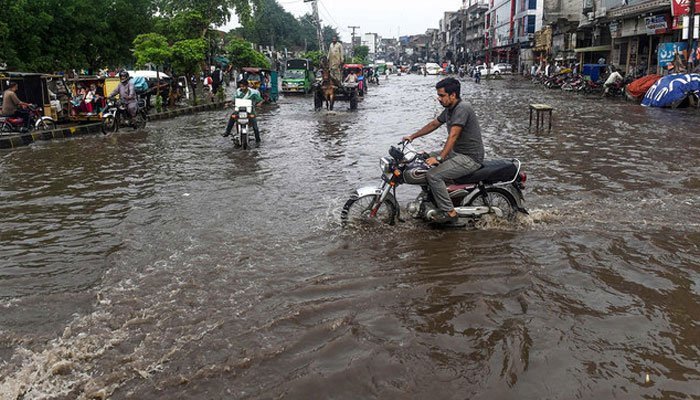Mishaal Arshad C.M Underground News
- Karachi may receive heavy rainfall between August 12 and 14.
- Weather to remain cloudy with a chance of drizzle in the next 24 hours.
- In August, three to four strong monsoon systems may have an impact on the weather in Sindh.
Karachi will likely get “above normal” rainfall in August as well, meteorological analyst Jawad Memon said on Saturday, after record rains caused massive destruction in the country in July, leading to the deaths of over 300 people, according to National Disaster Management Authority (NDMA).
Memon said between August 12 and 14, the city may receive heavy rainfall.
The analyst further said that in August, three to four strong monsoon systems may have an impact on the weather in Sindh.
Outlook for next 24 hours
According to PMD, the weather in Karachi is likely to remain cloudy in the next 24 hours with a chance of drizzle.
The lowest temperature recorded today was 26.5°C and the highest will likely range between 31°C and 33°C.
The humidity recorded this morning was 81%, the PMD said, adding that winds from the south-west are blowing at a rate of 18km per hour.
Outlook for Pakistan
In the weather outlook for the month issued by Pakistan Meteorological Department, La-Niña was said to be prevailing “and is likely to continue with weak intensity during August”.
The Indian Ocean Dipole (IOD), also known as the Indian Niño, is expected to remain in negative state, with increasing intensity towards the end of the forecast month.
Based on the global and regional circulation patterns, the countrywide outlook for Pakistan in August is a tendency for “above normal precipitation” over most parts of the country.
Northeastern Punjab, Kashmir, southern parts of Sindh as well as coastal areas of Balochistan are expected to receive “above normal” rainfall during the forecast month.
Most parts of Khyber Pakhtunkhwa and Balochistan may receive “slightly above normal” whereas Gilgit Baltistan may receive “nearly normal rainfall” during August.
Impacts
- Heavy rainfall can trigger flash flooding in hilly areas of Punjab, AJK and KP, as well as urban flooding in plain areas i.e. major cities of Punjab, Sindh and KP.
- Due to extreme hydro-meteorological events over catchments, riverine floods can’t be ruled out.
- Above normal temperatures in high altitudes are likely to increase rate of snowmelt in the Northern Areas subsequently increasing the chances of base flow in the Upper Indus basin.








